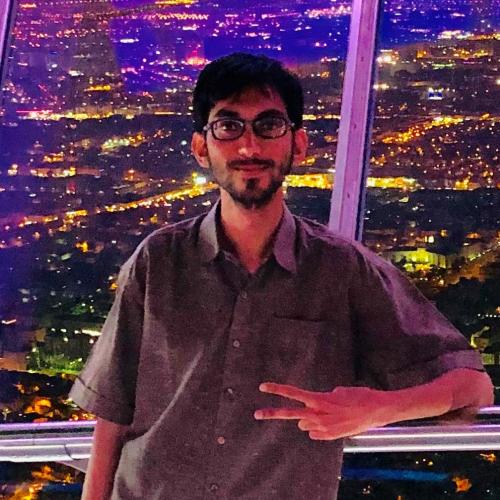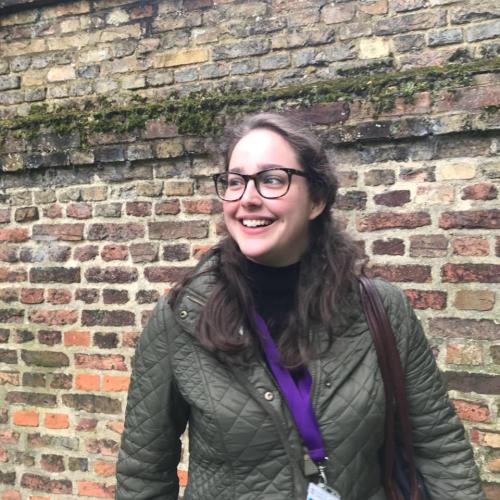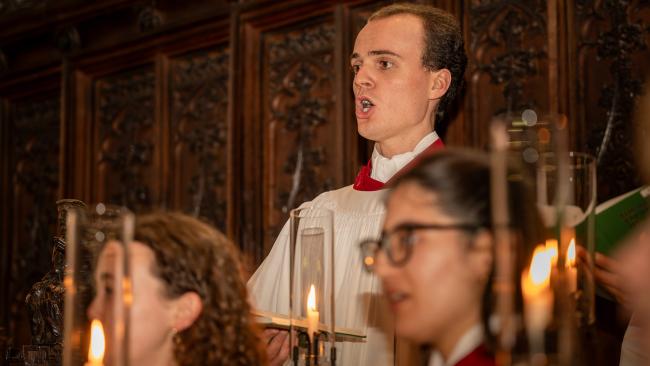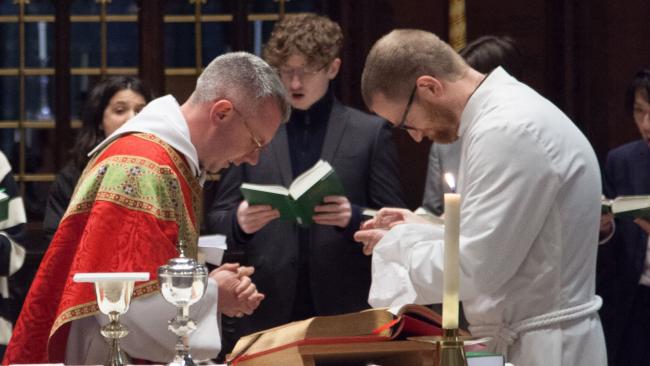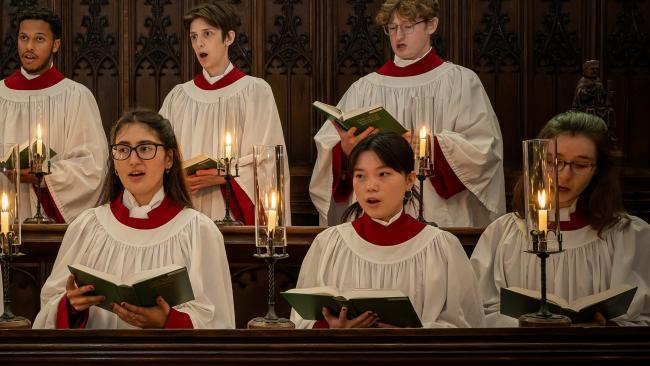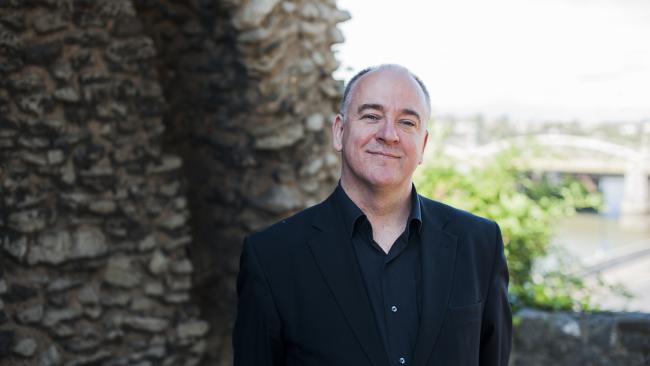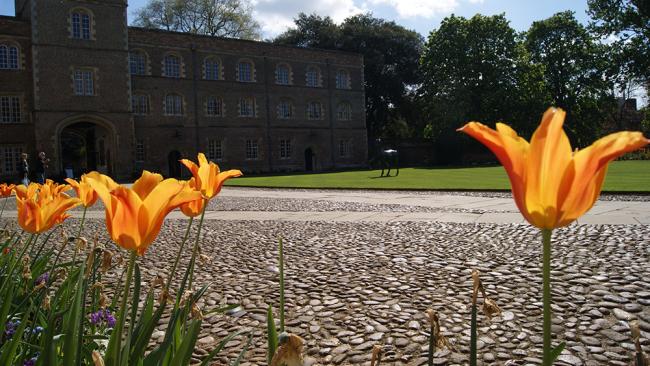
Nobel and Balzan laureates
Three members of Jesus College have been awarded Nobel Prizes, and two more have received the Balzan Prize, an award for the humanities and social sciences which has a similar status.
Members of Jesus College who have been awarded Nobel Prizes:
- Philip Anderson in Physics, 1977.
- Peter Mitchell in Chemistry, 1978.
- Eric Maskin in Economics, 2007.
Balzan Prize winners from Jesus:
- Ernst Gombrich in History of Western Art, 1985
- Colin Renfrew in Archaeology, 2004.
Philip Anderson
Anderson (1923-2020) was awarded the Physics Prize in 1977, jointly with Sir Neville Mott and John van Fleck, for their fundamental theoretical investigations of the electronic structure of magnetic and disordered systems.
He was a Fellow of Jesus from 1969 to 1975, while he held a Visiting Professorship at the Cavendish Laboratory, of which Mott was Head. He has been an Honorary Fellow of Jesus College since 1978.
Anderson’s prize winning insight was that electrons may be unable to pass through a disordered metal, not because of absorption, but, with all the multiple diffracting paths cancelling, because the incident energy of the electron wave is completely reflected.
This is a theory with great importance for a wide range of fields, from the electrical conductivity of semiconductors to the propagation of radio waves in heavily built up cities.
The 'spin-glass' theory which he propounded with Sir Sam Edwards (also of the Cavendish), has had similar wideranging influence, extending far beyond physics into engineering, neuroscience, and computing.
This theory says that ordinary glass, which does not have a regular arrangement of atoms like a crystal and so might be mistaken for a very viscous liquid, nevertheless has persistent order, a configuration of atoms that can be remembered 'forever', and that there is a distinction – a phase transition – between liquid and glass.
These two theories have revealed the elusive nature of order in quantum and classical systems that might otherwise have been thought to be merely random.
Peter Mitchell
Mitchell (1920-88) received the 1978 Chemistry Prize for one of the most important developments in biology during the 20th century: the chemiosmatic hypothesis.
He was an undergraduate and then a research student of the College between 1940 and 1948, but not a very successful one. Though some of his fellow students thought him the brightest member of his class, his best exam result was an upper second in Part II Biochemistry in 1942.
He obtained a PhD with difficulty, and the only University teaching post he held was a temporary one at a junior level. Much of his key experimental work was done (with Dr Jennifer Moyle) in his own private laboratory in Cornwall. He became an Honorary Fellow of Jesus College in 1979.
The science of bioenergy is the study of the processes underlying energy generation and its utilisation in biological systems. Mitchell first propounded his chemiosmatic hypothesis in 1961. It was a radical challenge to existing theories and it was only after many years of patient advocacy and experiments that it came to be widely accepted.
Peter Mitchell argued that the key to the generation of energy from food was not the production of a new chemical, as had previously been supposed, but rather the creation of an electrochemical gradient of hydrogen ions across the inner membrane of the mitochondrion. This is an intercellular organelle containing two small volumes of aqueous solution, one inside the other, separated from each other and from the rest of the cell by membranes.
The inner compartment would contain fewer hydrogen ions (positively charged, hydrated protons) and thus become electrically negative. The oxidation of metabolites would pump hydrogen ions from the inner to the outer spaces within the mitochondrion, and their flow back across the membrane down their electrochemical gradient would then be used to drive the production of a high energy molecule, adenosine triphosphate.
Eric Maskin
Maskin, a research Fellow at Jesus in 1976-7, was the joint winner of the 2007 Economics Prize for his work on mechanism design. This addresses the fundamental question of how to design ways of ensuring that a given social objective can be achieved despite the fact that individuals usually act in their own interest.
A New Yorker, Maskin (like Anderson) went to Harvard, where he read Mathematics and worked for his PhD degree in Applied Mathematics, before coming to Jesus College. He collaborated with Sir Partha Dasgupta of the Cambridge Economics Faculty on 'implementation theory', seeking to design rules of procedure that ensure the best chance for society as a whole from the range of alternatives available.
They went on to explore technical questions on the existence of equilibria in discontinuous games and, more recently, methods of voting that best promote democratic outcomes, concluding that the majority voting rule is the most robust.
Maskin has also made important contributions to the theory of auctions, while his most cited writing (with Drew Fudenberg) formalises the 'folk theorem', examining the prospect for long term cooperation based on fear of punishment where information is imperfect.
Eric Maskin has held professorships at the Massachusetts Institute of Technology and at Harvard, and now works at the Institute for Advanced Studies at Princeton. He became an Honorary Fellow of Jesus College in 2009.
Ernst Gombrich
Ernst Hans Josef Gombrich (1909-2001) was a distinguished art historian, the author of Art and Illusion (1960) and numerous other published works. Born in Vienna, he moved to Britain in 1939 and joined the Warburg Institute; he eventually became Professor of the History of the Classical Tradition there, and the Institute's director in 1959.
The many honours conferred on him included a Fellowship of the British Academy (1960), a CBE (1966), a knighthood (1972) and membership of the Order of Merit (1988). He became a Fellow of Jesus College in 1961, while visiting the University as its Slade Professor of Fine Art, and was elected an Honorary Fellow in 1963. He won a Balzan Prize for the History of Western Art in 1985.
Colin Renfrew
Lord Renfrew received a Balzan Prize in 2004 for his outstandingly innovative work in prehistoric archaeology. By cutting across established categories, he has profoundly changed the way the subject is approached. He was the College’s Master 1986-97, an Honorary Fellow from 2004, and Disney Professor of Archaeology in the University 1981-2004.
An undergraduate and a research student at St John’s College, he came to Cambridge to read Natural Sciences, changing to Archaeology and Anthropology in his second year. In the 1960s and 1970s he played a major part in bringing about the paradigm shift to the 'New Archaeology', campaigning for systematic and transparent research methods in the formulation of testable hypotheses.
His archaeological explorations have ranged from the Orkneys to the Aegean, and he was a pioneer in demonstrating the utility of Carbon-14 dating and mitochondrial DNA for research in prehistory. His book The Emergence of Civilisation (1972) introduced a systematic social framework for explaining changes in material cultures, and has become a model of how social change in any area may be investigated.
His controversial study of the spread of the Indo-European language, Archaeology and Language: the Puzzle of Indo-European Origins (1987), invoked a wealth of archaeological evidence. It proposed that language dispersal could be related to the origins of farming and consequent population changes, and might thus date from much earlier than had been previously assumed.
More recently he has sought to integrate archaeology, the history of climate change, and genetics into a chronological framework through which human evolution and dispersal can be understood.
